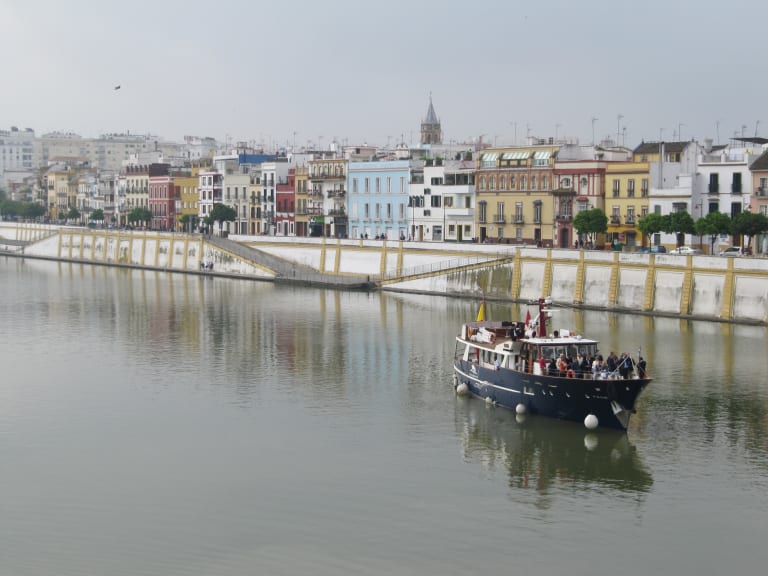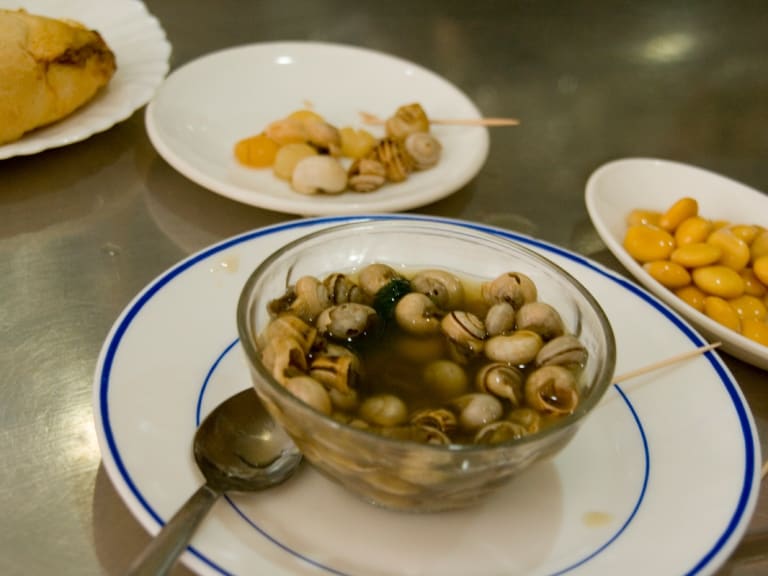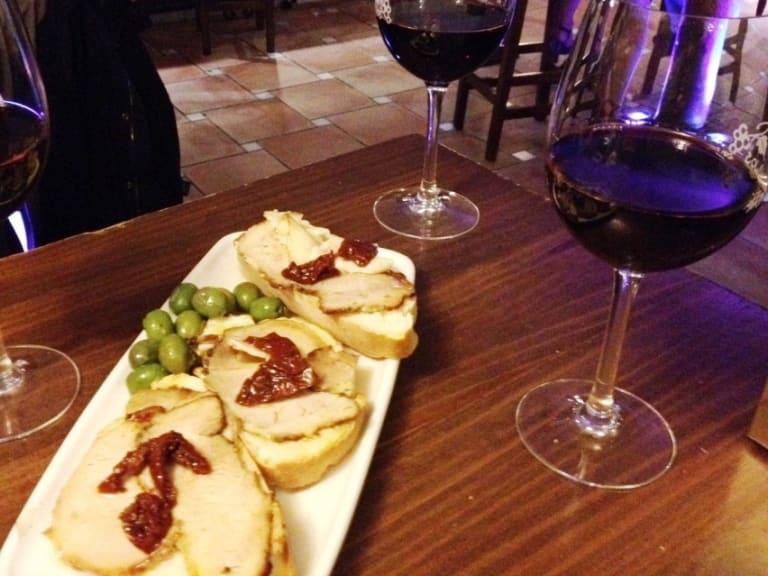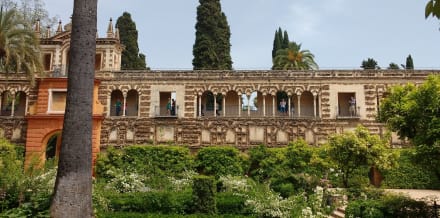More about: 10 Things to Do in Seville in Spring
While there are always plenty of things to see and do in Seville, the city is at its best in the spring. March, April and May are the three months of high season in Seville and, despite this, this is the best time to visit the Andalusian capital, before the scorching summer sun arrives.
At this time of year, Seville experiences the two most important festivals of the year: Holy Week and the April Fair, a great popular festival that starts exactly two weeks after the celebration of Holy Week. The key words are: eat, dance and have fun!
1. Easter Week in Seville

Holy Week in Se ville is an especially intense time. If you visit the city during these dates, you will certainly not forget the experience of seeing thousands of people watching each procession, the constant smell of incense, the continuous symphony of bands accompanying the religious images and, above all, the Nazarenes.
Throughout the week, processions take place in all parts of the city, although it is in the historic centre where you can see them best, provided you are able to move through the crowds of people that fill the narrow streets.
Perhaps the best time to see the floats is at dawn. On the night between Maundy Thursday and Friday, the whole city takes to the streets to watch the different religious images that process through the streets until well into the day.
Practical information
- Where: anywhere in the city, although the best place is in the centre. Forget public transport (impossible to use at this time of year) and try to walk to Cuesta del Rosario, Postigo, Triana Bridge or Calle Fería.
- When: there is no fixed date for Easter Week.
- Price: free, with the exception of those who hire chairs on the official route, who have to pay between 70 and 700 €. As these chairs are practically passed down from father to son, visitors will not be able to reserve any.
2. Take a route through the Triana neighbourhood in the fine spring weather

If there is a good time to spend a few hours exploring all the attractions of the Triana neighbourhood, it is spring. At this time of year, Calle Betis, which faces the Guadalquivir River, begins to recover the atmosphere that had diminished during the winter, as do the little squares located further inland in the area.
In the past, this was a neighbourhood where many sailors, singers and flamenco dancers lived, making it a very lively area.
My recommendation is to start your visit to Triana with a visit to the covered market at the end of the bridge. It is a great opportunity to taste or buy some Spanish cheeses and sausages.
Whether on your own or with a guided tour, you should not miss a visit to a pottery workshop, the typical art of the area.
If you're still in the area at sunset, there's no better place than Calle Betis for a romantic stroll and a drink overlooking the Torre del Oro. If you wish, it is also the perfect place to attend a flamenco show in Seville.
3. The April fair: Seville's most enjoyable festival

The Feria de Abril, Spain's most colourful celebration, combines tradition and, above all, folklore. This festival, which began as a livestock fair, has become the most famous in the whole country.
For 8 days, the only concern of the attendees is to have a good time, a concept that consists of staying in the enclosure until the body holds out dancing sevillanas with a large amount of rebujito(manzanilla wine mixed with a lemon-lime soda and lots of ice) in the body.
An artificial city is set up in a secluded corner of the city and, for a week, hundreds of thousands of people gather to dance sevillanas. Here you'll find horse-drawn carriages in the afternoon bringing the costumed attendees and in the evening thousands upon thousands of coloured light bulbs lit up late into the night.
The fería is made up of more than 1,000 booths of different sizes where people dance, eat and drink. One of the big problems for visitors is that most of them are private and, in theory, only members are allowed to enter.
However, on less busy days (especially on weekdays), the doormen may be more flexible. Otherwise, you will also find several public booths at the fair, such as those of the political parties, trade unions, districts and others.
If you've been to Seville with children (or even if you haven't taken them), don't miss a stroll along the so-called Calle del Infierno (Hell Street), a huge area with attractions of all kinds, from Ferris wheels to houses of terror.
Practical information
- Where: the fairgrounds are located in the Remedios neighbourhood, next to the Triana neighbourhood. The best way to get there is on foot, but you can also use a special bus service or take a taxi. In the latter two cases, be prepared to wait for many minutes to find a free one.
- When: two weeks after Easter. Tradition dictates that at least one day should fall in April, but in some (few) cases it has had to start at the beginning of May.
- Price: It costs nothing to enter the fair, but be prepared for prices inside to be higher than in the rest of the city.
4. Snail season

As is the case all over the world, Seville has its own typical dishes. In some cases, these are recipes that may seem strange to visitors from certain countries. In particular, in spring there is hardly a bar that does not offer snails, and there are even (friendly) arguments about who prepares them best.
The spring rains bring with them the snail season in Seville. Lovers of this exquisite ingredient flock to the bars and restaurants to enjoy this dish steeped in tradition and with that typical Sevillian flavour.
Although many are not used to it, my recommendation is to at least try it. Of course, accompanied by a cold beer.
Practical information
- Where: Every neighbourhood in Seville has a bar with a reputation for serving the best snails in town. If you want to play it safe, try the ones at Bodega la Mina, on Cuesta del Rosario.
- When: Snail season runs from May to June, although it can vary depending on heat and rainfall.
- Price: Prices range from around 2.50 euros for tapas, 5 euros for a plate and small bowl and 8 euros for a large bowl or portion. They can also be ordered to take away.
5. See the orange blossom in bloom

Beyond Easter and the fair, if there is one thing that characterises Seville when spring arrives, it is the scent of orange blossom in its streets.
My recommendation is to simply stroll through the streets. It's a good idea, for example, to walk around the Santa Cruz neighbourhood or take a night-time tour.
Other areas where this smell is persistent are the Plaza de San Lorenzo, the Alameda de Hércules, the Patio de Banderas and, of course, the Naranjos.
As soon as spring appears, the scent of orange blossom and bitter fruit is intense in Seville. This hypnotic aroma is accompanied by a dreamlike landscape, a city of historic architecture painted in green, orange and white.
Orange trees were once believed to be a talisman for happiness. Hence, in the streets of Seville you can enjoy more than 40,000 specimens distributed throughout the city.
6. Bike ride on the banks of the Guadalquivir River

Another thing to enjoy in spring in the Andalusian capital is the Guadalquivir River. As well as being able to sail from north to south along the waterway on one of the many cruises around Seville, it's a great idea to hire a kayak or, even better, ride along its banks on a bicycle.
Seville has a good infrastructure of bike lanes that will allow you to make the journey easily and safely. If you prefer, you can hire one of the bike tours around the city, but you can also rent one from a private company or from the public service offered by the city council.
Although it is true that this is a ride that can be done at any time of the year, nothing compares to the springtime scenery that decorates the banks of the Guadalquivir in spring.
For many people, these "shores" replace the beaches and they take advantage of the good weather to stroll along the shore or to sit and relax. Enjoy a picnic or sport in the open air, surrounded by this vibrant nature.
7. The greenery of the María Luisa park or the Alamillo park

One of the natural spaces that is always available and simply cannot be missed in spring is the Parque de María Luisa. With an almost impossible greenery, dotted with a variety of flowers and sculptures that fill this magical landscape full of history with life.
As you approach the park, which is next to another must-see, the Plaza de España, you'll find many Sevillians sitting on the grass relaxing or having a little picnic. That alone will give you an idea of how popular the park is in spring.
If you prefer a larger green space further away from the centre, you can always head to Alamillo Park. One of the advantages of this place is that it usually organises recreational activities on many weekends in spring.
9. Taste the typical torrijas of Semana Santa (Easter)

Lent has barely begun and we can already find these delicious sweets in all the confectioners' shops in Seville, as part of the abundant gastronomy found in this town.
Among the specialities typical of this time of year in Seville are the torrijas text, a slice of bread soaked in milk, dipped in egg and fried. As well as the simpler and more traditional ones, more and more variations are being prepared, with ingredients such as chocolate, white wine or cream.
They are usually eaten with coffee and you can enjoy the different versions you discover around the city.
Practical information
- Where: In any confectioner's in Seville, but if you're looking for luxury torrijas, visit Los Angelitos at Asunción, 24; 41011.
- When: Traditionally, we find these sweets as part of the typical Lenten gastronomy.
- Price: The price of torrijas can range from 1 to 3 euros, depending on the place, size and recipe.
9. The Tapas Route

Although it is always a good time to go on a tapas tour in Seville, there is no denying that the heat of summer and the cold of winter make it less appetising. Spring, however, is usually the perfect time to go from bar to bar sampling the countless specialities to be found in the city.
My advice, in any case, is to do it at night, accompanied by an expert, whether it's a tour guide or simply a friend you have in the city. This way you will be able to get to know places that are not the typical ones for tourists and, I assure you, you will notice the difference.
10. Experience the Corpus Christi festival

Among the many religious festivals in the city of Seville, there is one that competes with Holy Week in terms of public attendance: the Corpus Christi festival. This is celebrated sixty days after Easter Sunday and always on a Thursday.
If you are in the city, you will see that the night before, a special atmosphere can be felt all over the city. As many Sevillians do, you can take a tour to see the ephemeral altars that are set up along the route of the procession the following morning, including the one in the Plaza de San Francisco.
Shop windows are also decorated for this festival, as are many balconies in the historic centre.
Concerts are often held in the Plaza de San Francisco square and all the bars and restaurants in the area are packed until late at night.
Mass is held very early in the morning. Even if you are not religious, it is worth seeing the dance of the Seises, a group of 10 children who make up a group whose origins date back to the 16th century.
Finally, at around 8:30 in the morning, the procession takes place around Seville Cathedral. However, it is not easy to find a place in the streets.
Weather in Seville in spring

Beyond the weather averages, it is not at all easy to make a forecast of the weather in Seville in spring. This is because, for example, the month of April is usually very unpredictable and you can expect both heavy rain and heat above 25º.
On the other hand, the weather changes quite a lot as the season progresses. As early as May and especially in the first half of June, it is not uncommon to experience temperatures in excess of 30 degrees Celsius.
Average April temperatures range from a low of 11ºC to a high of 22ºC, while May averages 26ºC and 13ºC respectively. Finally, June has an average high of 31º, while the average low is 17º.
Therefore, my recommendation is to check the weather forecast shortly before your trip.



